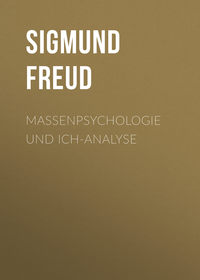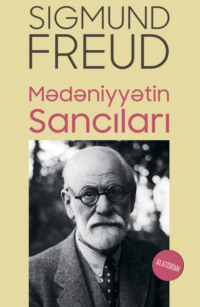 полная версия
полная версияDelusion and Dream : an Interpretation in the Light of Psychoanalysis of Gradiva
We have reached the end. An observant reader might remind us that, at the beginning, we had remarked that dreams are wishes represented as fulfilled and that we still owe the proof of it. Well, we reply, our arguments might well show how unjustifiable it would be to wish to cover the explanations which we have to give of the dream with the formula that the dream is a wish-fulfilment; but the assertion stands, and is also easy to demonstrate for the dreams in Gradiva. The latent dream-thoughts – we know now what is meant by that – may be of numerous kinds; in Gradiva they are day-remnants, thoughts which are left over unheard, and not disposed of by the psychic activity of waking life. In order that a dream may originate from them the co-operation of a – generally unconscious – wish is required; this establishes the motive power for the dream-formation; the day-remnants give the material for it. In Norbert Hanold’s first dream two wishes concur in producing the dream, one capable of consciousness, the other, of course, belonging to the unconscious, and active because of repression. This was the wish, comprehensible to every archæologist, to have been an eye-witness of that catastrophe of 79. What sacrifice would be too great, for an antiquarian, to realize this wish otherwise than through dreams! The other wish and dream-maker is of an erotic nature: to be present when the beloved lies down to sleep, to express it crudely. It is the rejection of this which makes the dream an anxiety-dream. Less striking are, perhaps, the impelling wishes of the second dream, but if we recall its interpretation, we shall not hesitate to pronounce it also erotic. The wish to be captured by the beloved, to yield and surrender to her, as it may be construed behind the lizard-catching, has really a passive masochistic character. On the next day the dreamer strikes the beloved, as if under the sway of the antagonistic, erotic force; but we must stop or we may forget that Hanold and Gradiva are only creatures of our author.
THE END1
Freud, Traumdeutung, 1900 (Leipzig and Wien, 1911), translated by A. A. Brill, M.D., Ph.B. Interpretation of Dreams, George Allen and Unwin, Ltd., 1913.
2
The case N.H. would have to be designated as hysterical, not paranoiac delusion. The marks of paranoia are lacking here.
3
See the important work by E. Bleuler, Affektivität, Suggestibilität, Paranoia, translated by Dr. Charles Ricksher in N. Y. State Hospitals Bulletin, Feb., 1912, and Die diagnostischen Assoziationsstudien by C. Jung, both Zürich, 1906.
4
Cf. Freud: Sammlung der kleiner Schriften zur Neurosenlehre, 1906. Translated in part by A. A. Brill, M.D., Ph.B. Nervous and Mental Diseases Monograph Series No. 4. Selected Papers on Hysteria and other Psychoneuroses. N. Y., 1912.
5
Cf. Bruchstück einer Hysterie-Analyse, 1905.
6
Cf. Breuer u. Freud, Studien, über Hysterie, 1905. Leipzig and Wien, translated by A. A. Brill, M.D., Ph.B. Nervous and Mental Diseases Monograph Series No. 4. Selected Papers on Hysteria and other Psychoneuroses.
7
Sante de Sanctis, I. Sogni. (Original in Italian.) Translated into German, Die Träume, by Mr. Otto Schmidt, 1901, Hallé, a. S.
8
Compare the text of Gradiva, p. 21
9
Cf. Sammlung kl. Schriften zur Neurosenlehre, V., and Traumdeutung, p. 344. Traumdeutung translated by A. A. Brill, M.D., Ph.B., Interpretation of Dreams, George Allen and Unwin, Ltd., 1913 (p. 441).
10
G. p. 57: “No – not talked – but I called to you when you lay down to sleep and stood near you then – your face was as calmly beautiful as if it were of marble. May I beg you – rest it again on the step in that way.”











